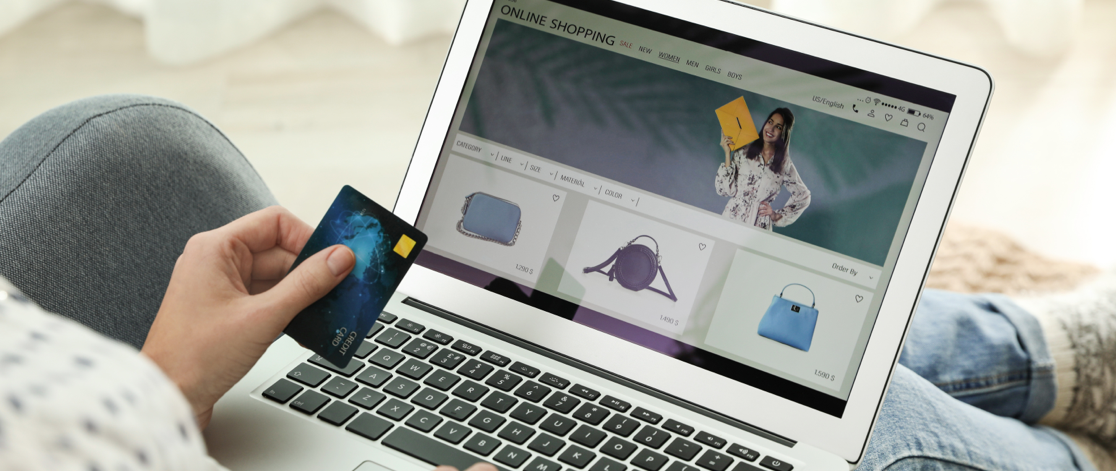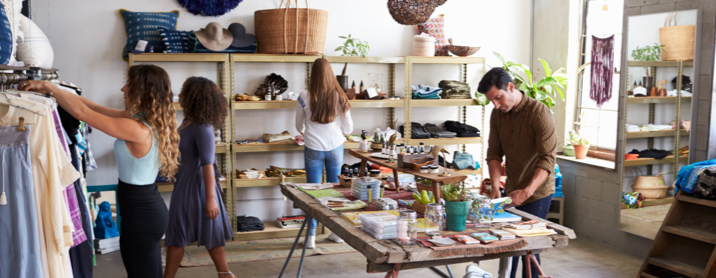GENERAL
11 Ways to Make Your Cash Register Ring Online and In-Store
GENERAL
11 Ways to Make Your Cash Register Ring Online and In-Store


If you’re a retail business owner today, a large part of your success hinges squarely upon the kind and quality of the relationship you have with your customers, particularly online.

11 Ways to Help Get (and Keep) Your Cash Register Ringing
There are many things you can do to not just increase sales both online and in-stores, but to help foster the kind of relationship with your customers to keep them coming back to you again and again:
1. Stick to Your Values
More and more consumers are paying attention to your company’s values, which charitable causes you support, your environmental friendliness, your workers’ happiness, etc. Consumers want you to be invested in the causes they care about and, if they feel like you’re being anything but sincere about your efforts they’ll quickly look to find another company that better aligns with their beliefs.
2. Make Everything Personal
Consumers expect a more personalized customer experience that speaks to their specific needs and preferences. As a result, companies are investing in testing programs to help them determine what’s most important to their customers. For companies reluctant to make that kind of investment, well, they may soon find their customers searching for a company that gives personalization the attention it deserves.
3. Sell, but Sell Softly
Today’s consumers arrive at a physical store or digital storefront well prepared; they’ve done their research, read all the reviews, and made their product comparisons. In other words, they’re not looking for a hard sell. However, you still need to find ways to help close the deal by putting yourself in your customers’ shoes and figuring out what else can be done to make the purchase experience easier and more meaningful.

4. Expedite Expedited Shipping
Free shipping is consistently cited as one of the most popular incentives by online shoppers. Two-to-three-day free delivery is no longer just expected—it’s assumed. If possible, find a way to offer your customers free shipping, even if that means increasing the price of a product to offset the shipping cost. Encourage shoppers to add items to their cart in order to qualify for free shipping, or ask them to join a paid membership group.
5. Make BOPIS Permanent
As a result of the pandemic, BOPIS, or buying online and picking-up in-store has become incredibly popular. It allows the shopper to get the item they purchased much faster and if they want to return the item they can just bring it back to the store. For lots of different types of products, online customization could combine with in-store pickup for a very compelling, double dose of personalization and convenience.

“The “e” in eCommerce doesn’t stand for easy.”
JOHN HAGEL
Business Author

6. Offer Alternate Payment Options
Alternative payment methods (APMs) is a payment that doesn’t involve cash or a credit card. Not only do APMs allow consumers to make quick and easy payments on goods and services, they’re particularly useful for eCommerce transactions. You need to be ready to offer a variety of payment options at your online checkout. At the top of that list should be buy now, pay later, which is the most popular APM in the marketplace.

7. Commit to Augmented Reality
Once used mainly for video games and entertainment, augmented reality (AR) is increasingly being employed by a diverse range of industries, including education, healthcare, retail, and real estate. There is simply too much competition in today’s marketplace for your company to quietly blend in with the rest of the players that do what you do. You need to be at the forefront of exploring and adopting advanced technologies and augmented reality is a formidable tool to help you get there.
8. Ascribe to the Power of Subscriptions
During the pandemic, subscription services underwent tremendous growth, but what really set the past year apart was the increase in subscriptions in the services sector. Owners of restaurants, hotels, and others upended their traditional business models to try subscriptions and found tremendous consumer interest. We’re shifting from a transactional economy to one based more on relationships, and a subscription is a recurring touchpoint that people have with a brand.
9. Have a Say in Voice Technologies
People now expect more products to be compatible with their favorite voice assistants. This integration allows people to control their TVs, home security systems, and even the lights with voice commands. The effect that this will have on your business is that you’ll need to start incorporating this in your products as well. If you sell a digital or electronic product, voice commands are something that customers will expect by default.

10. Pop up Stores Will Pop Up Even More
While pop-up stores are not new, their popularity is growing. Retailers find them to be a low-cost, low-risk way of experimenting with new types of products but, perhaps more importantly, it gives them a new and inventive way to tell or expand their brand story in a highly experiential and—hopefully—memorable way. Another reason for retailers to embrace the pop-up store is that they don’t have to sign long leases or purchase expensive corner stores in shopping malls to promote and sell their products.
11. Lose Your eCommerce Head
Every day, more and more buyers embrace using new technology for their transactions, like mobile apps, digital assistants, and smartwatches. Unfortunately, many traditional eCommerce sites use a single, monolithic architecture, where the back end and front end are linked together, so you can't optimize one without the other. A headless eCommerce platform separates the front end and back end of an eCommerce application, offering businesses freedom of expression to build whatever and wherever they want—in other words—flexibility.
The People Business
With the oversized role that technology plays in business, it can be easy to overlook the fact that you are—at the end of the day—in the people business. Ultimately, your job is to do everything you can to successfully establish, nurture, and maintain a mutually beneficial relationship between you and your customers. By leveraging the above suggestions, you’ll be taking a big step towards helping to ensure that your customer relationships are not only strong, but profitable.

DIGITAL MARKETING
Top 10 Photos of Developers Staring At Screens

DIGITAL STRATEGY
5 Ways Retailers Can Make Influencer Marketing More Influential

ECOMMERCE